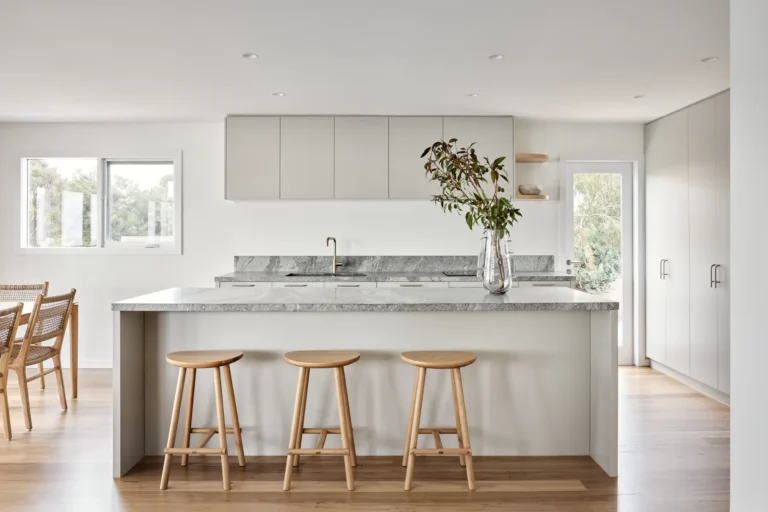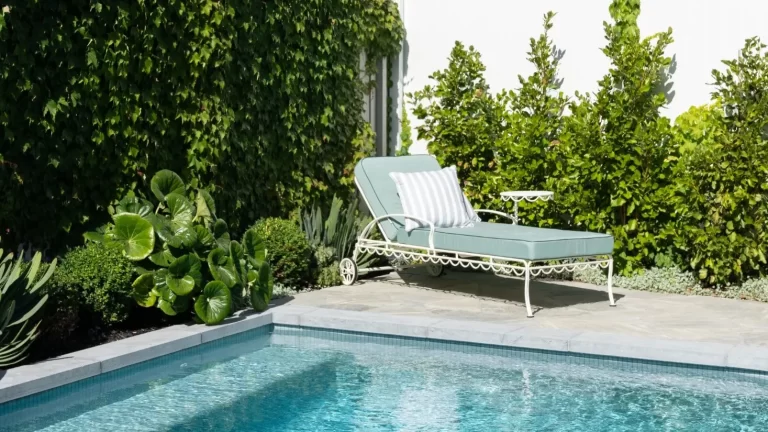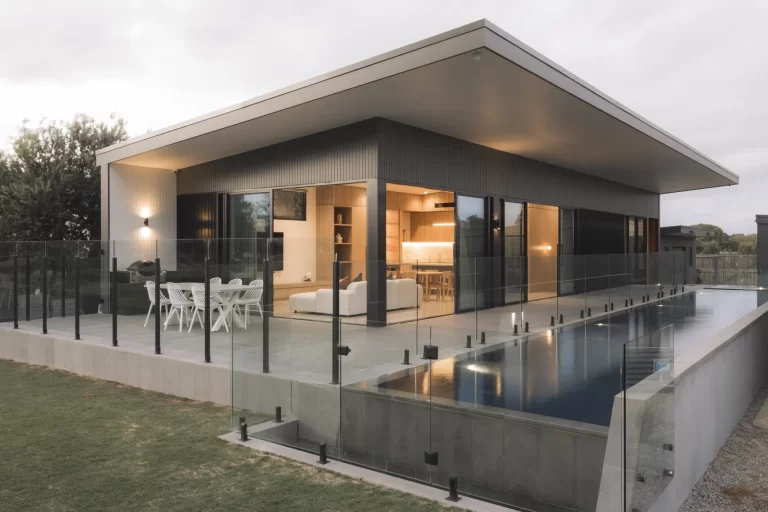At RMS Traders, our journey with natural stone began with a passion in Melbourne back in 1984. For decades, we have dedicated ourselves to sourcing the highest quality, authentic stone from world-class quarries. With nearly 40 years of expertise, we can confidently say that few materials possess the unique, untamed character of Crazy Paving.
This isn’t just a pattern; it is an ancient art form, a sophisticated, free-flowing mosaic created by setting irregularly shaped natural stone pieces. It’s a design choice that rejects the rigid, uniform grid, offering instead a visually compelling surface full of texture, depth, and organic elegance.
Here in Melbourne, homeowners and designers choose Crazy Paving to inject timeless character into their landscapes. Whether you are seeking a durable, slip-resistant finish for your pool area, a captivating driveway, or a winding garden path, this style effortlessly marries rustic charm with modern sophistication. As your trusted local supplier, we ensure every piece of our Crazy Paving Melbourne range, from rich Bluestone to warm Travertine, is dense, high-quality natural stone, guaranteeing a stunning finish that will endure for generations.
In this comprehensive guide, we will leverage our decades of experience to walk you through the history, materials, and essential tips for perfecting your crazy paving project. Let us help you transform your space with stone.
What Is Crazy Paving?
Despite the name, there is nothing truly “crazy” about this elegant technique. In the world of landscaping, Crazy Paving (also often referred to as Flagstone Paving or Random Paving) is a deliberate and masterful method of hard-surfacing.
Crazy paving is a paving style that uses irregularly shaped stones or pavers fitted together to create a natural, mosaic-like surface. Unlike standard uniform tiles, crazy paving embraces irregularity, giving outdoor spaces a rustic and unique appearance. It is often made from natural stones like travertine, sandstone, or slate, and is ideal for patios, pathways, gardens, and driveways. The flexible installation allows stones to be arranged creatively, and it can be combined with mortar, gravel, or grass for a customizable, visually striking finish.
A Legacy of Stone
The origins of this style are anything but modern. Crazy Paving can be traced all the way back to Ancient Rome, where it was used for durable roadways and public courtyards. The Romans, ever practical, utilised chipped or irregular pieces of limestone and coloured stone, fitting them together like a robust, earth-bound mosaic. This not only created a long-lasting surface but also ensured maximum use of quarried stone, reflecting a sustainability mindset centuries ahead of its time.
Why Choose the “Crazy” Look?
The magic lies in its highly customisable aesthetic. Because every piece is random, the resulting surface is completely unique and full of texture, depth, and character.
At RMS Traders, we ensure our Crazy Paving is sourced from high-quality natural stone, such as Bluestone, Travertine, and Slate. This guarantees that your finished surface is not only visually stunning but also incredibly robust and durable, perfect for enduring the weather extremes of Australia. When these irregular natural stone pieces are set in mortar, they create a solid, resilient finish for patios, driveways, and pool surrounds.
What Materials Are Used & Best Options in Australia for Crazy Paving?
The material you choose for your Crazy Paving project is the single most important factor for both the finished aesthetic and its performance in the Australian climate. At RMS Traders, we exclusively supply natural stone for our Crazy Paving range, ensuring superior density, longevity, and a truly authentic look.
Here is a quick guide to the best natural stone options and where they excel:
| Stone Material | Appearance & Colour Profile | Ideal Application in Australia | Key Benefits for Homeowners |
| Bluestone (Basalt) | Deep blue-grey, charcoal to black tones. Often features natural ‘catspaw’ (small pores) for added character. | Driveways, High-Traffic Patios, Pathways, Garden Edging. A Melbourne favourite. | Extremely dense, highly durable, exceptional strength, naturally high slip resistance (especially in natural split finishes). |
| Travertine | Warm, earthy tones from creamy ivory and light beige to darker mocha and silver-grey. Features natural voids and porous texture. | Pool Surrounds, Alfresco Areas, Sunny Patios, Courtyards. | Stays cool underfoot (ideal for bare feet), naturally slip-resistant due to texture, beautiful Mediterranean/resort aesthetic. |
| Limestone | Softer, lighter palette in whites, creams, and pale greys. Offers a refined, serene, and sophisticated feel. | Patios, Low-Traffic Pathways, Feature Areas. Excellent for coastal style homes. | Versatile for modern or traditional looks, soft underfoot, ages beautifully, and complements lush gardens. |
| Quartzite (e.g., Loden, Santos) | Highly variable, including soft greys, rustic golds, and silvery tones. A crystalline, hard-wearing stone. | All Outdoor Areas, Driveways, Façades, Areas needing maximum resilience. | Extremely hard and durable (similar to granite), excellent resistance to scratching and wear, low porosity (less maintenance required). |
| Slate | Deep, dramatic colours ranging from black and charcoal to green, purple, and rusty reds. Distinctly layered and textured. | Pathways, Feature Walls, Rustic Patios, Areas seeking a striking visual contrast. | Highly durable, naturally slip-resistant, provides a beautiful textured surface and rich, non-fading colour. |


The RMS Difference: Not All Crazy Paving is Equal
A crucial distinction to remember is that high-quality Crazy Paving is crafted from pieces of dense, durable natural stone, it is not simply broken, low-grade concrete or recycled building rubble. Our direct sourcing guarantees you are getting the thick, premium material required to achieve a long-lasting and visually superior finish, specifically tailored to withstand the diverse conditions of the Australian environment.
How to build a crazy paving path?
Creating a durable and beautiful Crazy Paving path is a project of precision and creativity. The secret lies in a solid foundation and careful stone placement. At RMS Traders, we summarise the process into three essential phases:
Preparation and Base
The entire pathway’s stability depends on proper groundwork. You must excavate the area and establish a compacted, deep sub-base of road base (crushed rock). This foundation prevents future shifting or sinking, ensuring your path lasts for generations.
The Creative Lay
This is where the magic happens. Before using any cement, you dry-lay your irregular stone pieces (Bluestone, Travertine, etc.) like a jigsaw puzzle, aiming for consistent gaps (10–20mm) between pieces. Once the pattern is perfected, the stones are carefully lifted, bedded into a stiff sand and cement mortar mix, and tapped level with a rubber mallet.
Grouting and Protection
The final steps lock the structure together.
Grout: A flexible, external-grade grout is forced firmly into the joints to fill all voids. Excess grout must be cleaned immediately from the stone face.
Seal: Once cured, the entire surface must be treated with a high-quality natural stone sealer. This protects your investment from stains, moisture absorption, and weathering.
When these steps are followed using premium natural stone, you achieve a unique, robust, and timeless feature for your landscape.

Important considerations & tips for doing it well
As Melbourne’s trusted natural stone supplier, we understand that achieving a flawless Crazy Paving finish is a blend of artistry and technical precision. To elevate your path from simply “laid” to truly stunning, keep these expert considerations and tips in mind:
Aesthetic & Design Prowess of Crazy Paving
| Tip | Description | Why It Matters |
| Start with the ‘Dry Lay’ | Lay out your pieces like a giant jigsaw puzzle before applying any mortar. Begin with the large central pieces and fill in outward. | This allows you to visually balance the pattern, manage the flow, and minimise waste by pre-cutting only where necessary. |
| Maintain Consistent Gaps | The “crazy” lies in the stone shapes, not the gaps. Aim for a consistent joint width (typically 10mm–20mm) throughout the project. | Uniform gaps ensure stability, prevent large, unsightly voids, and give the finished mosaic a professional, cohesive look. |
| Blend the Crates | If your stone arrived in multiple crates or pallets, mix pieces evenly from all of them during the lay. | Natural stone has inherent colour and shade variations. Mixing prevents noticeable patches of lighter or darker stones. |
| Grout Colour is Key | The colour of your grout dramatically impacts the final look. Dark grout creates a strong contrast and makes the stone edges ‘pop,’ while light grout creates a softer, more seamless visual blend. | Choose a colour that complements your stone and desired style. For example, a charcoal grout with Bluestone emphasizes the deep tones. |
Structural & Longevity Tips
| Tip | Description | Why It Matters |
| Drainage is Non-Negotiable | Ensure your base is excavated and compacted to allow a slope (a minimum 1-2% gradient) that directs water away from your home and paved area. | Water pooling is the number one cause of structural failure, moss growth, and efflorescence (white powder) on pavers. |
| Compaction is Critical | The sub-base (road base) must be heavily compacted with a plate compactor before the bedding mortar is added. | Poorly compacted bases lead to uneven settling, which causes individual stones to sink, rock, or crack over time. |
| Use a Bonding Slurry | Before placing the mortar bed, apply a bonding agent or cement slurry to the substrate (especially a concrete slab) and to the back of each individual stone. | This step, often skipped by amateurs, ensures a superior and lasting chemical bond between the stone and the mortar bed, preventing the stone from lifting or coming loose. |
| Thicker Stones for Traffic | If your path or area is used as a driveway or sees heavy vehicle traffic, select stones that are 30mm or thicker to handle the heavy load. | Thicker stone offers greater compressive strength and reduces the risk of breakages under weight. |
The Final Touch: Sealing
Sealing is not optional. Because natural stones like Travertine and Sandstone are porous, they are susceptible to moisture and staining.
Pre-Seal: We strongly recommend applying a quality penetrating sealer to your stones before you begin grouting. This makes the post-grouting cleanup significantly easier and prevents residual cement/grout from staining the surface.
Post-Seal: A second, final coat applied once the grout has fully cured (and the path is completely dry) provides maximum long-term protection against the elements, oil spills, and general wear and tear.
To ensure your investment lasts for decades, we always recommend consulting with experienced landscapers or speaking to our stone experts at RMS Traders for advice tailored to your specific stone and application.
What materials might not be so good or have drawbacks?
While Crazy Paving offers tremendous design freedom, the biggest mistake homeowners make is cutting corners on material quality. The rustic look does not mean you should use low-grade or inappropriate products.
Button to the second blog: Avoid These Common Mistakes While Laying Crazy Pavers
Here is what RMS Traders advises you to avoid:
Concrete or Broken Tiles: These are often cheap but lead to problems. Concrete cracks easily and lacks the permanent colour of natural stone. Broken ceramic tiles often have dangerously sharp edges and poor long-term adhesion outdoors. Always insist on high-quality natural stone.
Porous Stone Left Unsealed: Natural stones like Travertine and Sandstone must be sealed. If left unsealed, they are highly susceptible to staining (from BBQs, oil, or tannins), mould growth, and faster deterioration from Australian weather. Sealing is mandatory for longevity.
Thin Pavers in High-Traffic Areas: If your stone pieces are under 20mm thick, they should not be used on driveways or areas with heavy weight. Thinner stone risks cracking and failure under load.
Choosing quality natural stone means avoiding these long-term headaches and securing an outdoor space that retains its value and beauty for decades.

In General Avoid:
Very Soft Stones (e.g., some limestones, marbles):
While beautiful, softer stones are prone to scratching and chipping under outdoor use. Their high absorption rates make them susceptible to rapid staining and moisture damage if not rigorously maintained.
Polished Finishes for Outdoor Floors:
We strongly advise against using highly polished stone finishes in any exterior area, especially around pools or pathways. They become dangerously slippery when wet, posing a safety hazard. Opt for textured finishes (like natural split, tumbled, or sandblasted) instead.
Thin, Brittle Offcuts:
While Crazy Paving often utilises irregular pieces, placing brittle pieces that are too thin (e.g., under 20mm) in areas expected to carry heavy loads (like driveways) is a recipe for failure. They will crack under pressure.
Stones with High Moisture Susceptibility Without Sealing:
Any stone that absorbs a lot of water is vulnerable to deterioration, cracking (due to freeze/thaw cycles), and organic growth. Sealing is mandatory to manage moisture and protect your investment.
Poor Base or Jointing:
The most common cause of failure is improper installation. A weak, uncompacted base or inadequately filled joints will inevitably lead to shifting, sinking, and cracking of the entire paved surface over time.
Choosing quality natural stone and ensuring professional installation means avoiding these long-term headaches and securing an outdoor space that retains its value and beauty for decades.
Sources:
naturalstonetiles.com.au
wikipedia.org
pavingexpert.com
buildmat.com.au




